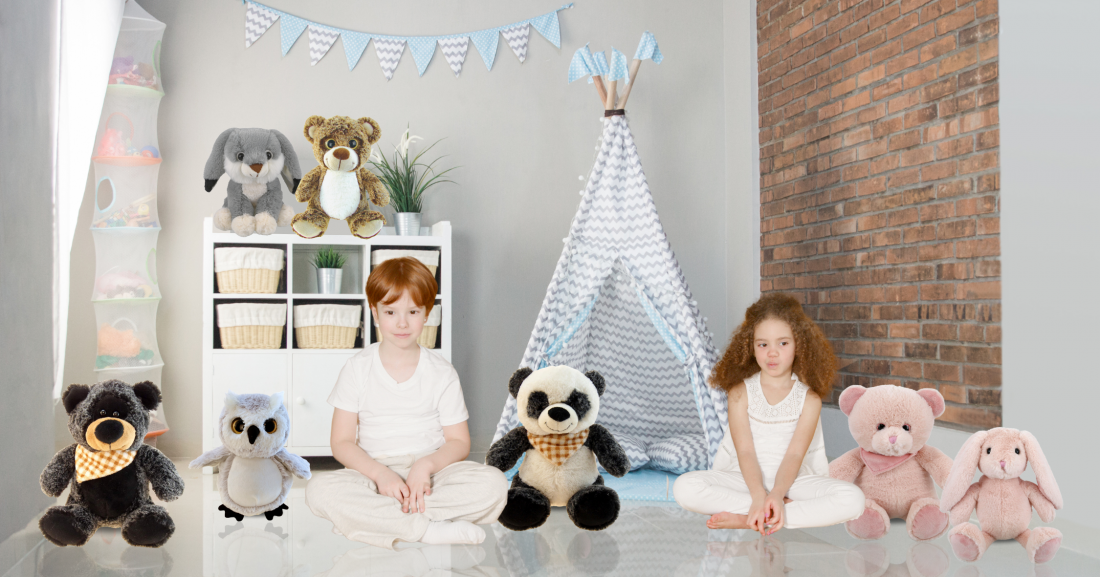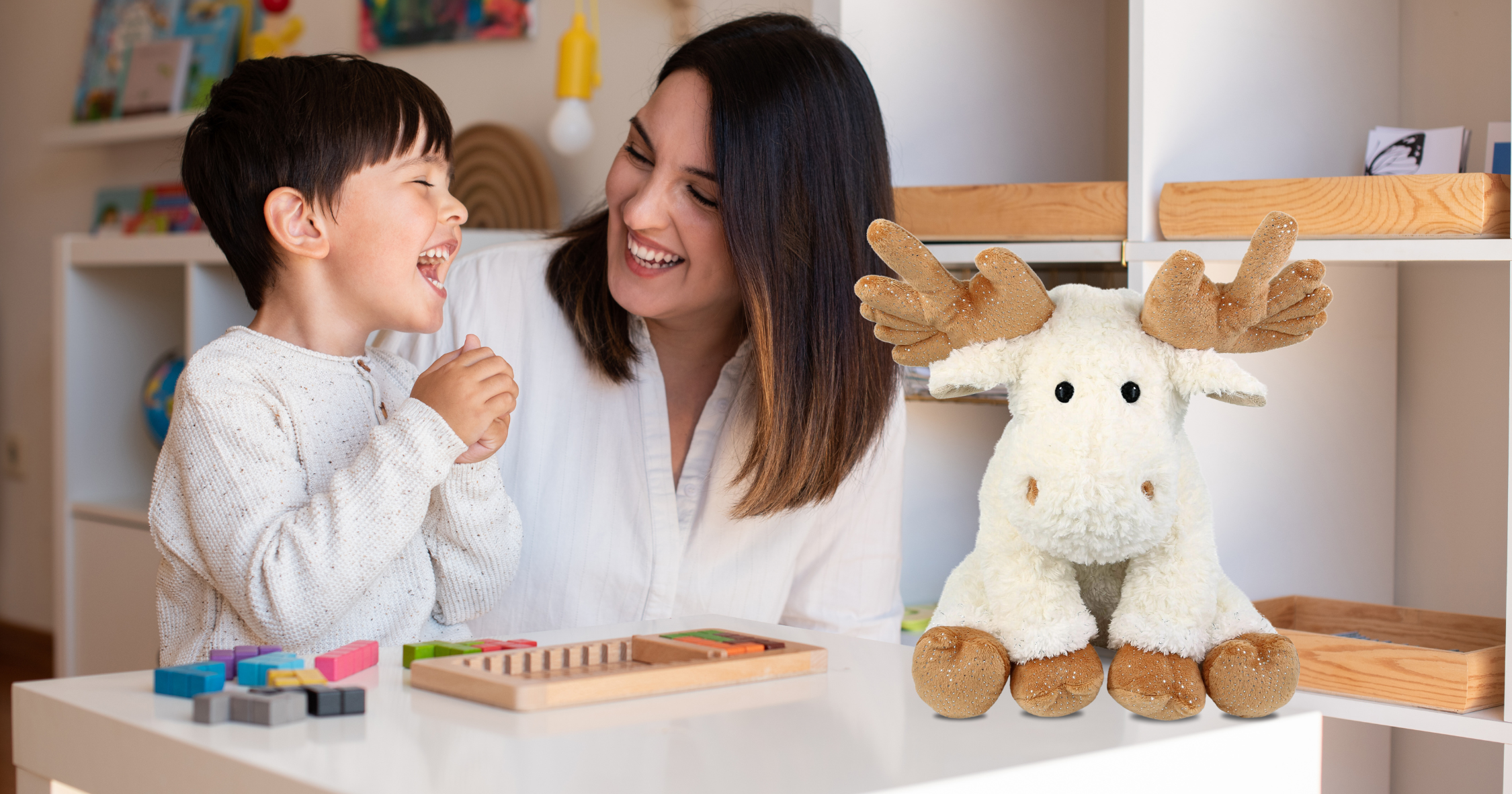
7 Key Benefits of Plush Toys for Child Development
Plush Toys and Child Development: 7 Key Benefits
Plush toys do more than offer comfort; they actively contribute to a child’s emotional, social, and cognitive development. Whether used as child development toys in health care settings or simple companions at home, plush toys help children grow in various ways.
Let’s explore seven reasons why plush toys are essential for your child’s development.
1. Emotional Comfort
Plush toys provide emotional security for children, especially in times of distress or uncertainty. Many children form deep attachments to their plush companions. They often rely on them for comfort during stressful situations such as starting school, moving homes, or even bedtime.
- Soothing Presence: A plush toy offers familiarity and consistency, especially during changes or difficult situations. For example, a black bear plush animal pillow toy can remind children of safety, helping them stay calm and grounded when anxious.
- Security in Unfamiliar Environments: Whether at a doctor’s office, staying over at a relative’s house, or in other new environments, a plush toy provides a sense of home and security.
- Emotional Outlet: Plush toys give children a safe space to project their emotions, boosting their emotional development. They can pretend their toy is feeling what they feel, allowing them to explore and express their emotions without judgment. This ability to externalize their feelings helps children navigate complex emotions like sadness, fear, or loneliness.
2. Imaginative Play
Plush toys are often at the center of imaginative play, helping children create entire worlds and scenarios. This creative exploration is vital for cognitive development, allowing kids to experiment with ideas, develop problem-solving skills, and tell engaging and fun stories.
- Storytelling: Children use plush toys to tell stories, whether it’s an ocean adventure their stuffed animal dolphin plush goes on or a day-to-day routine. These stories may reflect real-life experiences or imaginary worlds, allowing children to exercise creativity.
- Problem-Solving Through Play: Imaginative play often involves encountering and overcoming challenges. For example, a child may pretend their plush toy is sick, prompting them to “find a cure” or care for it. These scenarios require children to think critically and come up with solutions.
- Expression Through Characters: By creating personalities and feelings for their plush toys, children can express emotions and thoughts they may not yet have the words to describe fully. Children gain a deeper understanding of the world around them through the actions and stories they create.
3. Social and Emotional Learning
Social and emotional learning are critical as children grow; plush toys are tools for developing these skills. Through interactions with their toys, children learn about empathy, communication, and caring for others.
- Practicing Empathy: Caring for plush toys teaches children compassion and empathy, preparing them for peer relationships.
- Building Social Skills: Plush toys often involve make-believe social scenarios, such as tea parties, allowing children to practice sharing, taking turns, and cooperating.
- Developing Emotional Intelligence: Role-playing with plush toys helps children understand how different actions affect others, which is critical for building emotional intelligence like using their brown cat plush as their favorite pet.
4. Language Skills Development
Talking to or narrating the adventures of their stuffed animals helps children develop their language and communication skills. This type of interaction encourages children to build vocabulary and practice expressing their thoughts.
- Narrating Play: Children often narrate what their toys are doing, helping them structure sentences and build storytelling skills.
- Expanding Vocabulary: By describing the actions of their stuffed toys, children practice using new words and constructing sentences, boosting the child’s speech and language development.
- Encouraging Conversations: Plush toys and stuffed animals act as listeners, allowing children to hold conversations, which strengthens their verbal skills in a fun, non-threatening way
5. Cognitive Skills
Stuffed animals and plush toys help children develop cognitive abilities through creative play. They are tools for building critical thinking and decision-making skills essential for early childhood cognitive growth.
- Critical Thinking: Children invent scenarios for their toys, which requires logical thinking and decision-making, sharpening their cognitive abilities. For example, a moose police plush could be a “brave officer” protecting a toy city from mischievous toy animals.
- Memory and Planning: Children often create ongoing stories with their stuffed animals, which helps them plan and remember details and aids their memory development.
- Cognitive Growth: Whether organizing their toys or deciding what their plush toys will do next, children engage in activities that promote brain growth.
6. Fine Motor Skills
Handling stuffed animals and plush toys helps children develop fine motor skills by dressing, feeding, or simply moving them. These small, controlled movements are crucial for daily activities as children grow.
- Improving Coordination: Dressing, feeding, or handling a plush toy, like a big monkey plush in a doctor’s outfit, helps children improve their hand-eye coordination and fine motor control by encouraging precise movements.
- Confidence in Independence: Mastering these skills gives children the confidence to complete tasks independently, such as brushing their teeth, tying shoelaces, and buttoning clothing.
- Cognitive Connection: Fine motor tasks often involve coordinating physical actions with thinking and strengthening neural connections between the brain and body.
7. Building Responsibility
Taking care of stuffed animals or plush toys teaches children about responsibility. Children learn about routines, responsibility, and empathy by pretending to look after their toys while having fun.
- Caretaking Role: Children often assign needs to their toys, such as pretending they’re hungry or sleepy, which helps them understand responsibility.
- Learning Compassion: Through this caretaking role, children develop empathy and grasp the importance of caring for others. Like a sheep plush toy—soft, gentle, and nurturing—children learn to care for their little flock.
- Developing Independence: As children take ownership of their plush toys or stuffed animals, they learn the value of caring for their belongings, fostering independence.
Conclusion
Plush toys and stuffed animals do more than provide comfort; they are essential tools for child development. According to Piaget’s theory of cognitive development, these toys play a crucial role in the preoperational stage (2-7 years), where children use imagination and symbols to understand the world.
Through pretend play, children assign feelings and roles to their plush companions, nurturing their language skills, creativity, and emotional expression. This play type fosters cognitive and emotional growth, making these toys valuable for healthy, well-rounded development.



Sorry, the comment form is closed at this time.